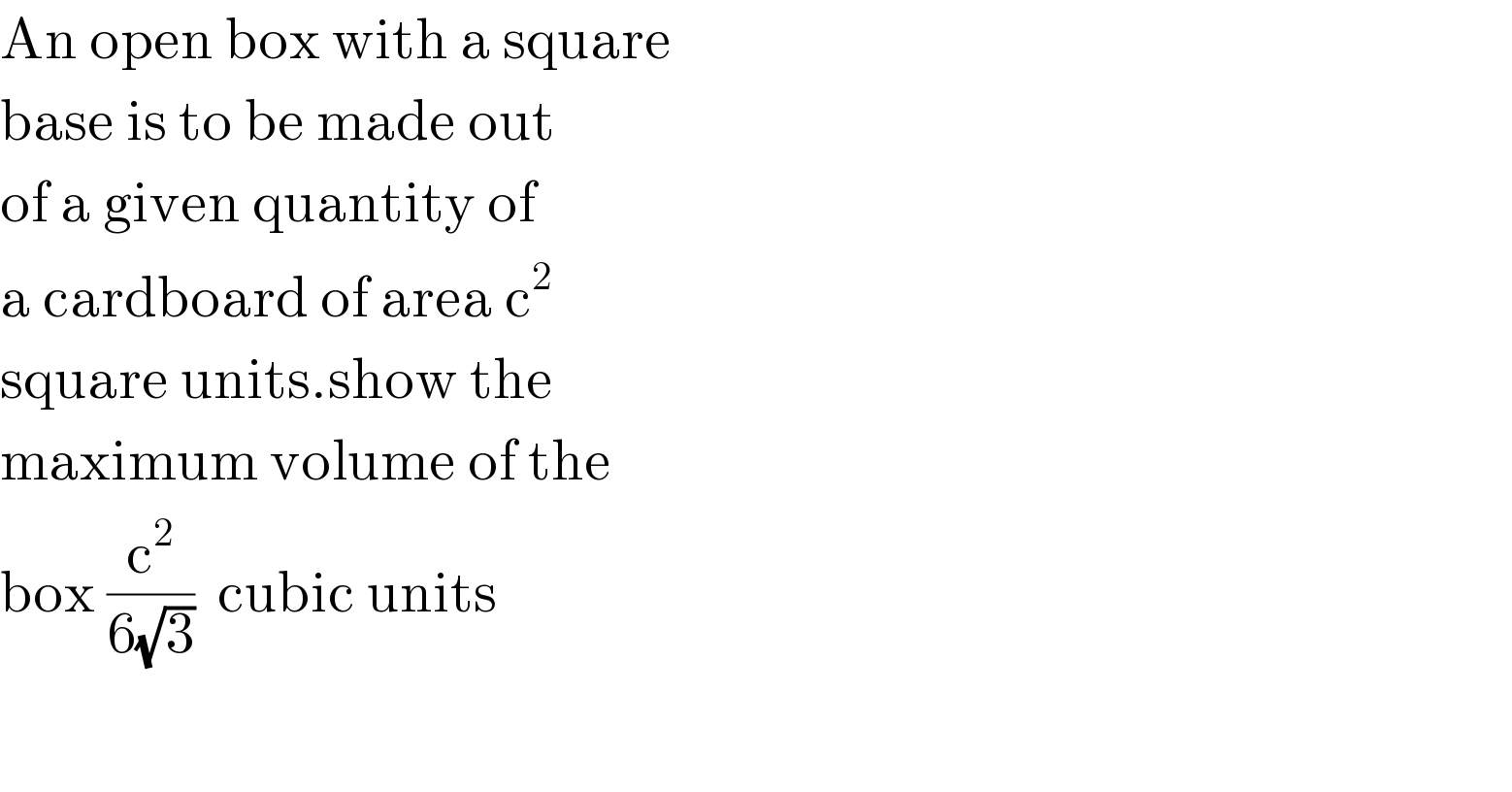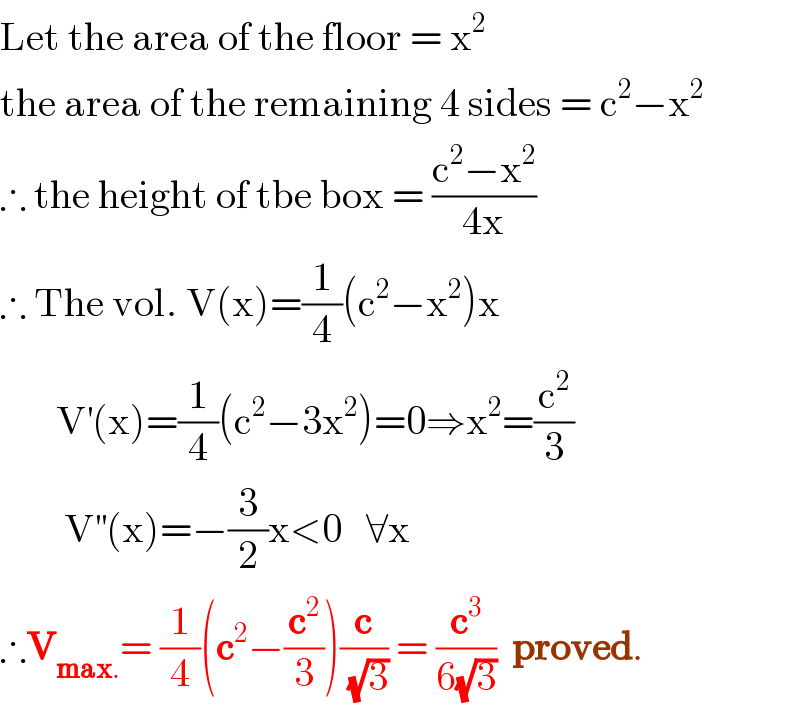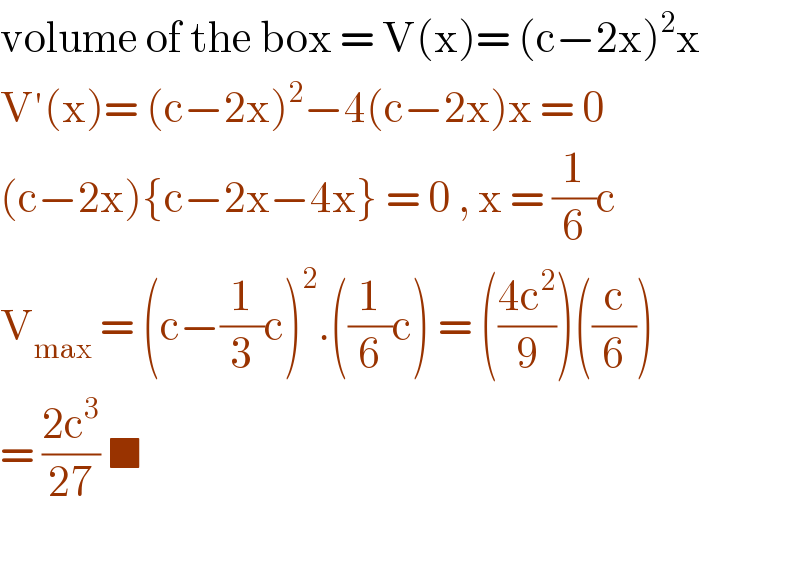
Question and Answers Forum
Question Number 100341 by peter frank last updated on 26/Jun/20

Commented by PRITHWISH SEN 2 last updated on 26/Jun/20

Answered by bobhans last updated on 26/Jun/20

| ||
Question and Answers Forum | ||
Question Number 100341 by peter frank last updated on 26/Jun/20 | ||
 | ||
Commented by PRITHWISH SEN 2 last updated on 26/Jun/20 | ||
 | ||
Answered by bobhans last updated on 26/Jun/20 | ||
 | ||
| ||